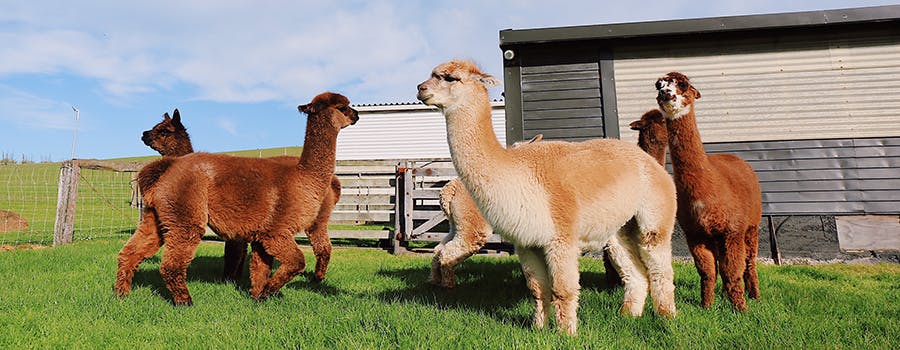Updated 12 June 2025
Recently adopted a feline friend, and want to get clued-up on how to brush your cat’s teeth? Look no further - below find the ultimate guide to cleaning cat teeth. Here you’ll find step-by-step instructions on teeth cleaning for cats, along with tips for getting your cat used to dental cleaning, and advice on the equipment needed.
All the information below has been checked and verified by veterinarian Dr Liam Bullock BVSc (Hons) MRCVS, so rest assured - your cat’s teeth are in safe hands.
Should I brush my cat's teeth?
Yes, brushing your cat’s teeth can help to prevent a variety of dental problems. In fact, cats are just as prone to dental issues as people are, especially if they mainly eat soft food.
To help keep up with your cat’s oral and dental health through home dental care, follow our step-by-step instructions on introducing teeth brushing, and how to clean your cat’s teeth below.
How to introduce teeth cleaning for cats
If your cat hasn’t had their teeth brushed before, you should introduce teeth brushing slowly. This will help to avoid scaring your cat, and can even make teeth brushing into a bonding opportunity. To slowly introduce teeth cleaning for your cat, follow the steps below that have all been approved by a vet:
- Pick a quiet, calm place to start where your cat feels at ease.
- Get a cotton swab and dip it in tuna water or put a small amount of a pate-type cat treat on the end.
- Get your cat comfortable in your lap or in front of you. Try to position them facing away from you so that if they try to back away, they don’t escape.
- Let your cat smell the cotton swab, and gently move your cat’s head upwards slightly and pull back their lips. If your cat is resistant to you lifting their lips, try to coax them with a treat.
- Carefully run the cotton swab across the area where your cat’s teeth meet their gums.
- If your cat doesn’t allow you to use the cotton swab, try putting a bit of toothpaste on your finger to start with.
- Start by only ‘cleaning’ a couple of teeth, but slowly increase as your cat becomes more comfortable.
- Once your cat is comfortable with the cotton swab, you can start using a toothbrush.
Top tip if you’re using a finger brush:
If you’re using finger toothbrushes, the process is mostly the same. The only difference is that you should let your cat chew and investigate the brush while you use it.
Trending posts
Purr-use some of the top blogs our members have been loving this month- Top male dog names for your new furry friendGot a new furry family member in your pack? Check…

- Top female dog names for your new fluffy palWelcoming a new pooch into your family? Explore…

- 250+ gray cat names your silver feline will loveRecently welcomed a fluffy gray bundle of joy into…

- What are normal pet sitting rates?Discover the average pet sitting rates for animals…

- Unique dog names to stand out from the packDare to be different with our list of the best…

Step-by-step instructions on how to clean your cat’s teeth
Once your cat is comfortable with their toothbrush, it’s time to start brushing their teeth properly. Follow these vet-approved steps for brushing your cat’s teeth to stay on top of their oral hygiene and health:
- Apply a small amount of your pet’s toothpaste to the toothbrush. Let your cat sniff the toothpaste if they seem apprehensive.
- Gently lift your cat’s head and pull their gums back slightly.
- Try to brush the side teeth first as this is where plaque builds up most quickly.
- Focus on only cleaning the outside of their teeth - the insides of their teeth will not have as much plaque buildup.
- Make sure that you are gentle and do not over-brush their gums. If your cat seems distressed or in pain, remove the brush and try again another time.
- Keep brushing for about 30 seconds on each side of your cat’s mouth to make sure that you get all the plaque off.
- Reward them with a healthy treat after brushing their teeth.
What toothpaste should I use when brushing my cat’s teeth?
You should be using a cat toothbrush and toothpaste to clean their teeth. Never use human toothpaste, as it can cause gastrointestinal issues for cats. You should steer clear of using baking soda to clean your cat’s teeth for the same reason.
You can find cat toothpaste in a wide range of flavors, such as fish and poultry, which can be more palatable for your cat.
What toothbrush should I use for brushing my cat’s teeth?
There are plenty of different toothbrush types that you can get to brush a cat’s teeth. We’ll list these below so that you can find the cat toothbrush that suits your feline:
- Small angled toothbrushes that are good for getting around a cat’s mouth easily.
- Double-headed brushes for getting either side of your cat’s teeth.
- Rubber brushes that fit over your finger.
- A baby toothbrush with very soft bristles.
How often should I brush my cat's teeth?
You should brush your cat’s teeth around three times per week - every day is excessive for cats. This brushing cadence will help to reduce the buildup of plaque.
Be sure to keep an eye on the state of your cat’s teeth and overall wellbeing. If your cat hates brushing, maybe see if twice a week is enough. Likewise, if their teeth look in poor condition, you might need to brush more often or take them to a vet for an examination.
How long should I brush my cat’s teeth for?
You should brush your cat’s teeth for around 30 seconds on each side of their mouth - this should be enough to remove the plaque.
What should I do if my cat won’t let me brush their teeth?
You should introduce teeth brushing slowly to your cat. Get them used to the toothbrush and toothpaste first, and slowly build up to a proper clean. Use a cat toothpaste in their favorite flavor, and reward them afterwards.
Health benefits of brushing your cat’s teeth
So, why should you be brushing your cat’s teeth? Explore the benefits of teeth brushing below:
Regular brushing can help remove plaque and tartar as well as help prevent gingivitis, which could eventually lead to periodontal disease if left untreated.
If your cat gets periodontal disease, they could end up losing teeth - which can be painful and stressful.
Getting out the toothbrush and toothpaste can help make sure that your cat stays healthy and can continue eating solid food for years to come.
Remember, if you’re worried about your cat’s dental health, be sure to see a vet or contact our 24/7 Vet Advice Line if you’re a TrustedHousesitters member.
Other ways to care for your cat’s teeth: tips on teeth cleaning for cats
If your cat is resistant to having their teeth cleaned, there are some other things you can do to keep up with their dental hygiene. Find a few ideas below:
- Add dry food to your cat’s diet. Chewing dry food can help diagnose plaque.
- Get feline dental treats from your vet or a pet shop. These can also help reduce plaque.
- Get a dental toy for your cat. These often have rubber spikes, and chewing on them can help remove plaque, just like a finger toothbrush does.
- Consult your vet. If your cat has severe plaque issues, you can ask your vet about specific diets designed to reduce this.
Key takeaways on brushing your cat’s teeth
- Brushing a cat’s teeth can prevent dental disease and tooth loss.
- Always use cat-safe toothpaste and toothbrushes.
- Introduce brushing slowly to get your cat used to it.
Top tips for a healthy, happy feline
- Follow a dental care regime. Whether it’s brushing your cat’s teeth or introducing a dental toy, all pet parents should be looking after their cat’s dental health.
- Request a checkover from the vet. If you’re unsure about your cat’s dental or oral health, consult your vet.
- Get your vacation pet care sorted. Vets agree pets are happier at home, so share your feline’s personalised (dental) care plan with an in-home sitter to keep them calm and content while you’re away. To find out more about how to connect with verified pet sitters, click below.
Connecting with pet sitters
Meet our veterinary expert, Liam
This article has been checked by veterinarian Dr Liam Bullock BVSc (Hons) MRCVS.
As a small animal vet, Liam has spent time working in both first-opinion and referral-level practices. After gaining a strong affinity for educating owners about their pets, Liam decided to dedicate some of his non-clinical time to tutoring students, who were preparing for exams or struggling at school. By combining a passion for teaching others, and a keen interest in raising awareness about animal health issues, Liam decided to begin writing veterinary content. This now also allows him to raise awareness of important animal health issues outside of the consultation room.
To help your kitty have the best dental health possible, try to combine these with regular brushes. Looking for more tips on how to brush cat teeth? Why not head on over to our Community Forum and seek advice from a community of global, like-minded pet lovers.
How to brush your cat’s teeth: FAQs
Should you brush your cat's teeth?
Yes, it’s recommended that pet parents brush their cat’s teeth to help remove plaque and avoid dental diseases.
Can I brush my cat's teeth with toothpaste?
You should use cat toothpaste to brush your cat’s teeth. Do not use toothpaste for humans, as it can cause gastrointestinal issues in cats.
How often should I brush my cat's teeth?
It’s recommended that you brush your cat’s teeth around three times per week.

